In 2001, Catherine Butler and Ahmed Sidki walked into a disused chapel in the sleepy town of Bruton in Somerset, England. They were city folk, itching to get back to West London after a weekend in the countryside. Their friend had suggested they take a look at it. They walked into the place with its flint stone exterior, stained glass windows and high ceilings; a strange sense of calm washed over them. They made an offer on the spot, and drove back to Notting Hill thinking, “What have we done?” They moved in soon after, and in 2008 they turned it into At the Chapel, the restaurant, bakery, coffee shop, wine cellar, hotel and local meeting place that is tucked away down a narrow road of honeycomb-colored stone houses, lace curtains, and antique shops.
This is where we find ourselves this afternoon, with the low winter sun streaming in through the windows and the open kitchen clattering away behind us. An iron trolley is being filled with piping hot pastries—the work of Tom Hitchmough, the resident baker who sleeps all day and arrives at 8 p.m. to begin his shift, baking bouncy loaves of sourdough, focaccia, pastries and pizza bases through the night. In the small reception next door, wooden shelves are filled with wine bottles hand-selected by Eric Narioo, an authority on natural wine. Flat whites and bitter espressos are made from single-origin Mozzo beans at the bakery’s coffee station. And the restaurant’s menu, which changes up to twice a day, combines classic British dishes and Mediterranean comfort food using the bounty of produce that surrounds the village, from local lamb and organic chickens to cheese made a mile down the road.
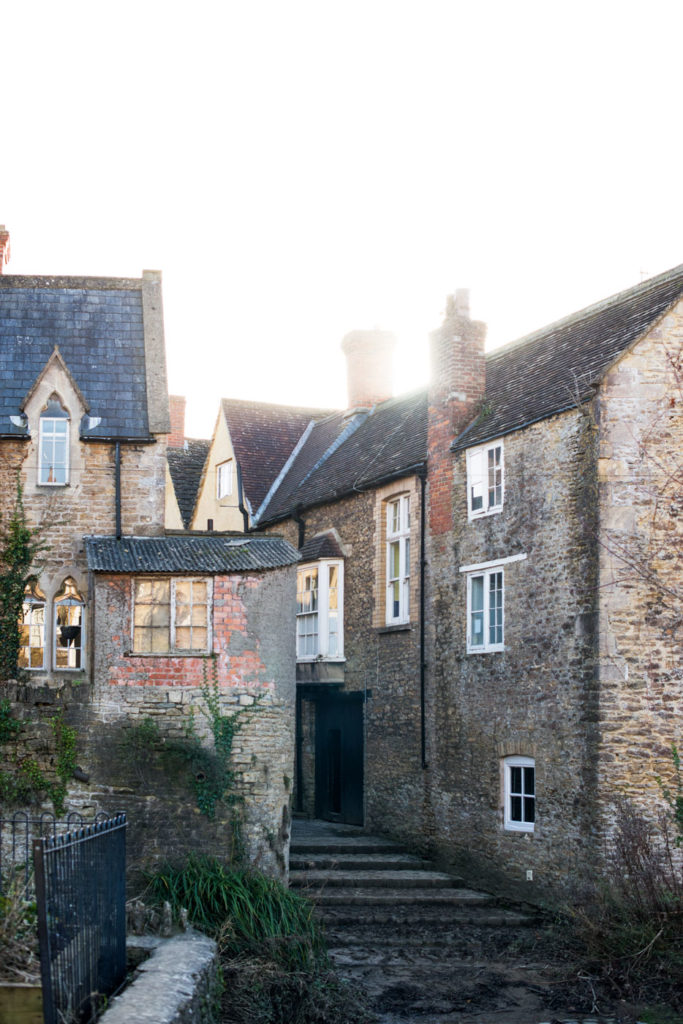
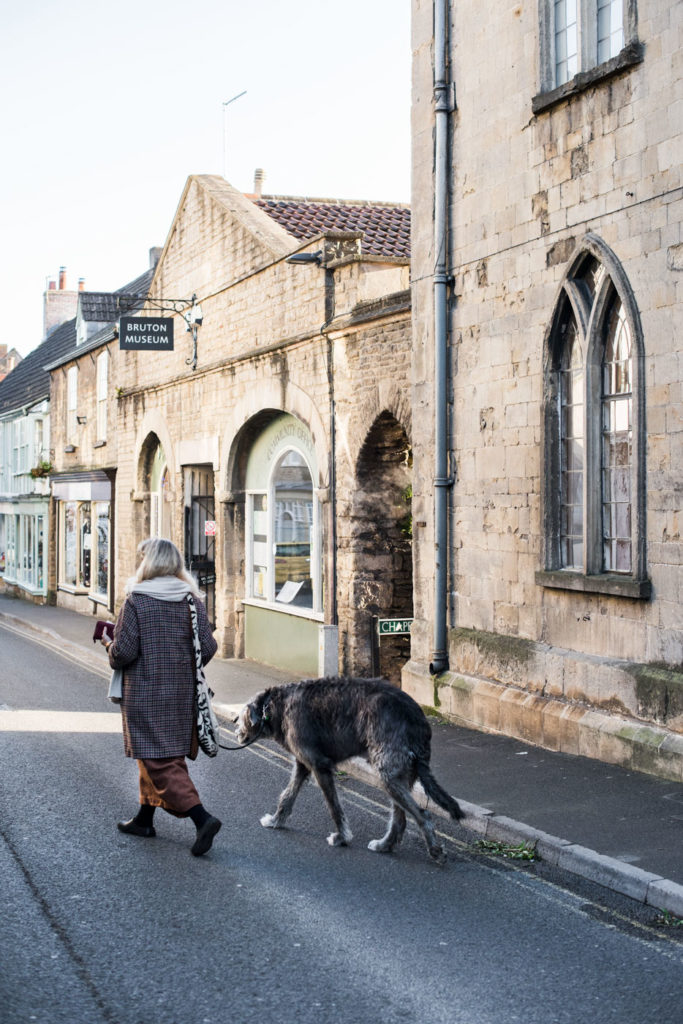
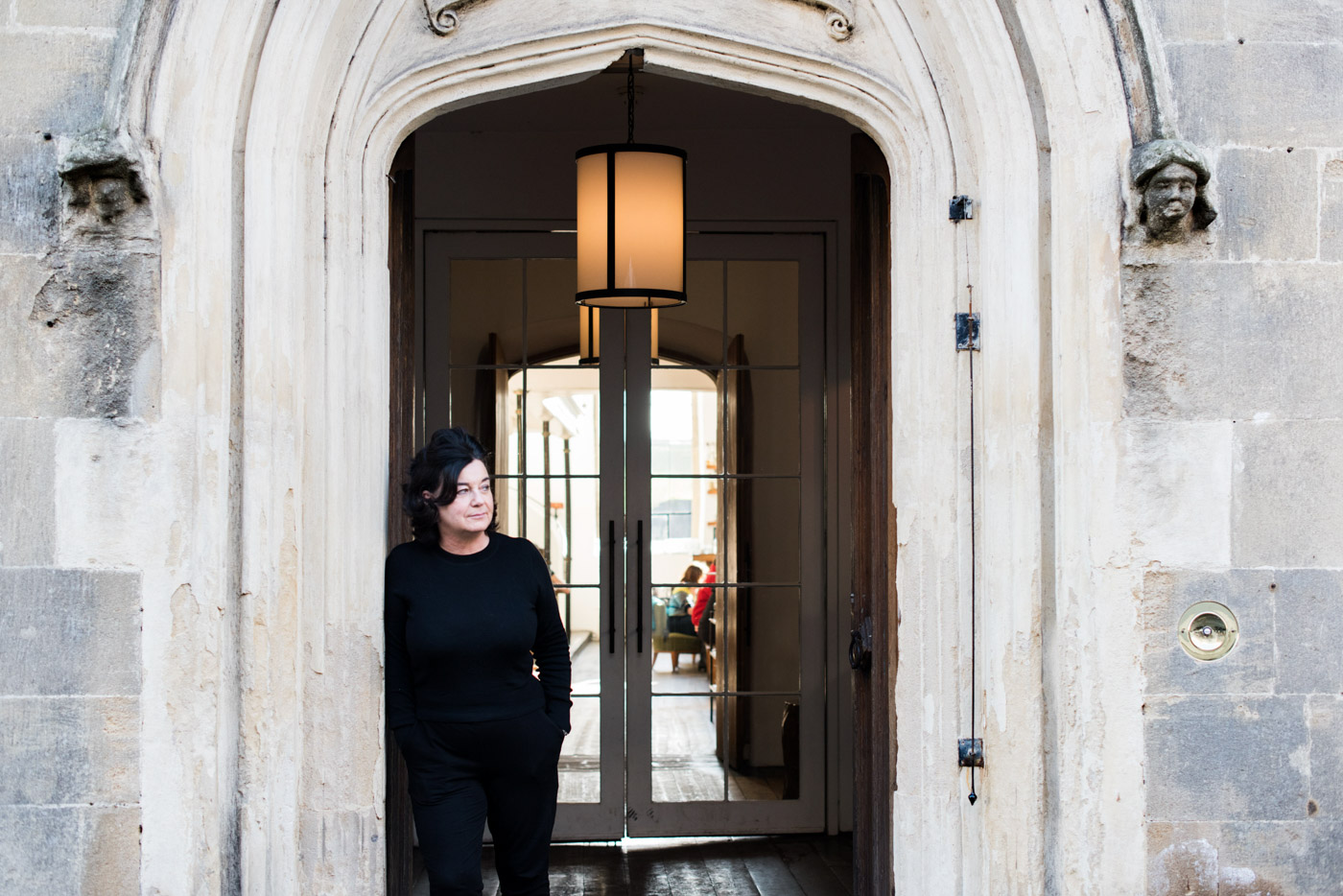
Breakfast, lunch and dinner are served in the main dining room, which seems to drink in sunlight. It is washed in white, with scrubbed mahogany floorboards and a bar made from reclaimed beams. A wide, winding staircase coils up to a gallery, which hugs the edge of the room. There are two long church windows on the back wall; two wide eyes gazing out over the grassy hills, terracotta chimneys and church steeples. Cows graze in the fields outside and pheasants run in zigzags down the misty country roads covered in a blanket of soupy mist in the winter, and illuminated by shafts of sunlight in the summer.
At the Chapel is filled with contemporary art, from the blinding white figure between the windows which seems to be floating up like an ascending Christ, to the paintings owned by internationally-acclaimed local gallery Hauser & Wirth. There is an installation in the center of the dining room—a pendant of hanging glass spheres, like bubbles suspended in the air. There is a handful of bright, attic-like rooms for guests—some with original church windows that look out over the clay rooftops, some with roll top baths and giant beds crowned with wooden ceiling beams. Down in the clubroom they hold film screenings, literary events and lectures. Genesis once recorded down here, while the Glastonbury quartet Reef now use it as a base. Guests congregate there in the evenings to listen to live music and drink at the bar, mixing with guests like designer Alice Temperley, artist Sam Taylor-Wood, and photographer Don McCullin. One night, the musician Peter Gabriel even broke into an impromptu piano solo. “Things just seem to happen here,” Butler laughs.
Walking into At the Chapel is a little surreal. Outside, the streets are narrow and quiet. Bruton is, in many ways, the encapsulation of a rural English village. It is built into the folds of the Somerset countryside—a patch of thatched houses and a 14th-century church in an otherwise endless stretch of land. But it is also a surprising place. For a long time now, it has captured the imaginations of artists, intellectuals and well-known musicians who come here to escape London’s smoggy air and stuffy underground. And they can all be found in the main dining room of At the Chapel where they come to meet friends for lunch, read in a slat of sunlight, or dance in the downstairs bar. This ancient building was once a place of religious worship and is now, arguably, a place for the worship of new-age bohemianism—food with provenance, artisanal bread and coffee, intrepid wines.
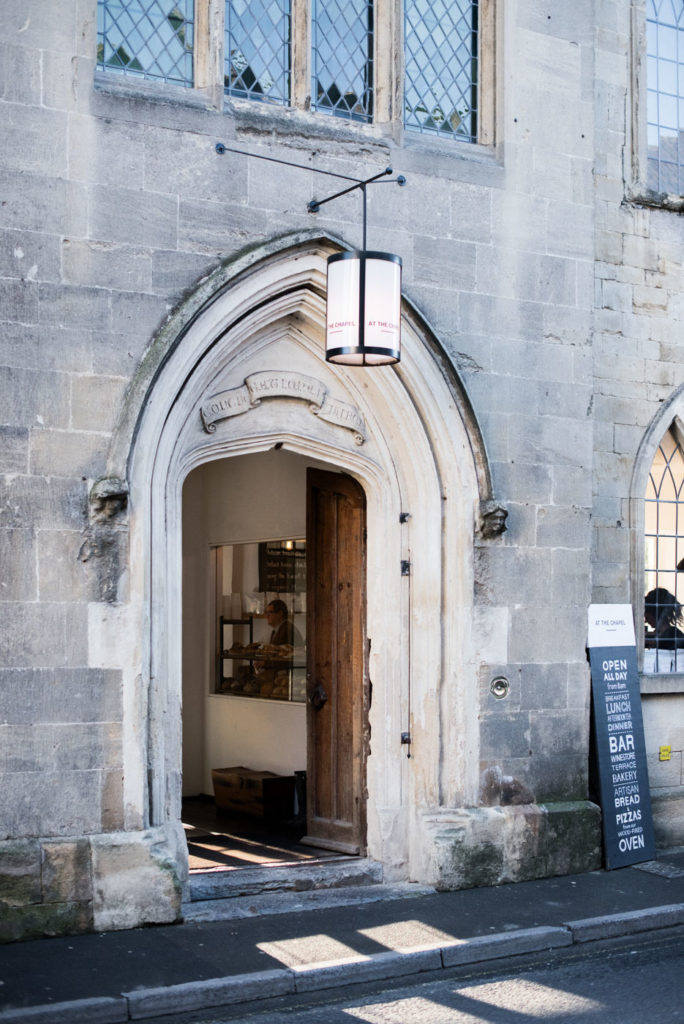
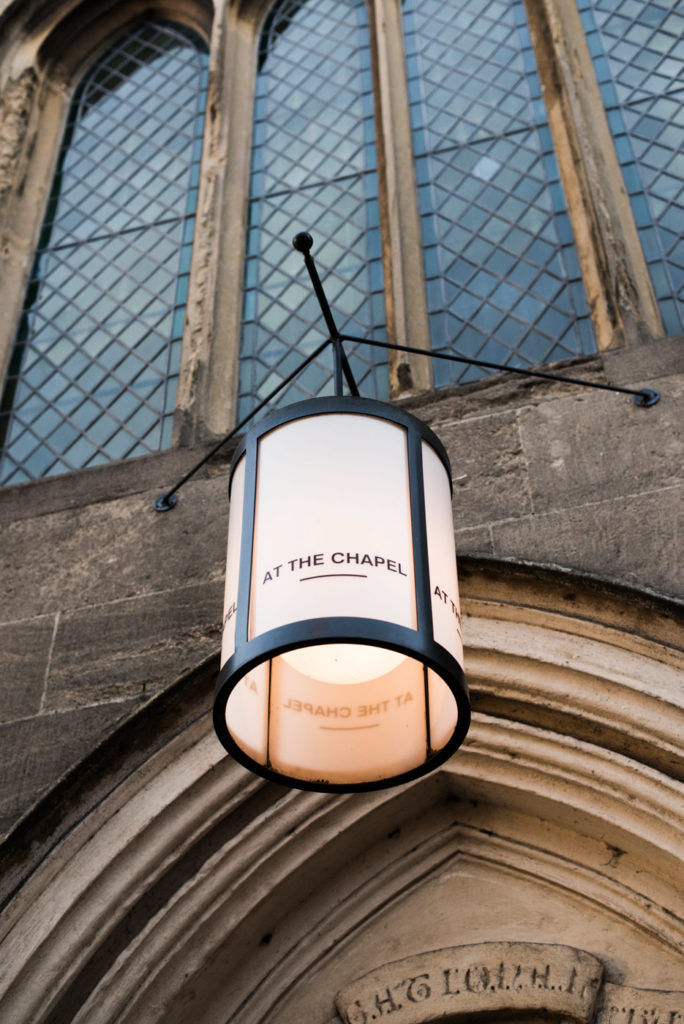
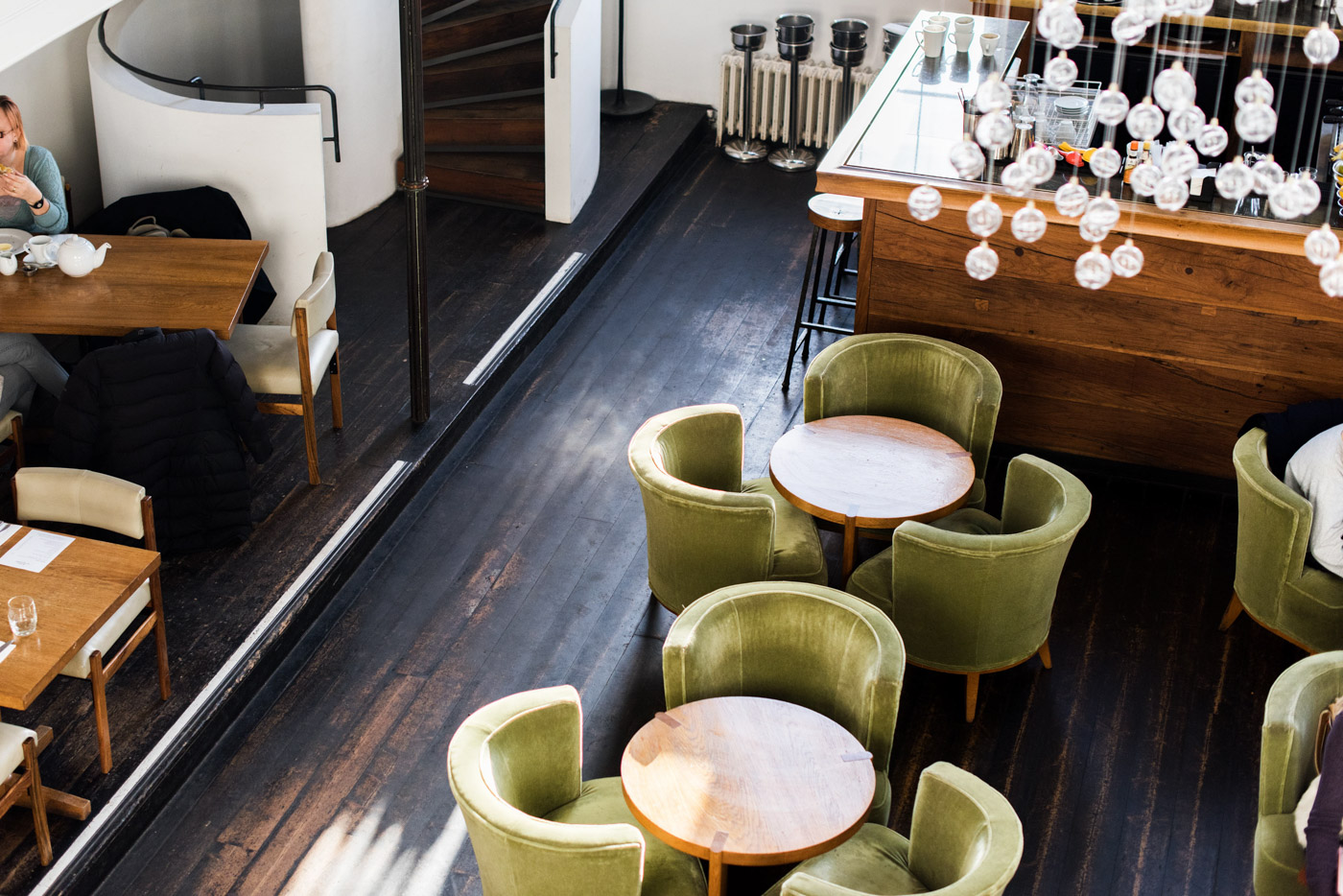
Sidki trained as an architect and studied at the London College of Furniture. His work can be found all over the building, from the reclaimed spiral staircase to the furniture, which is made using repurposed local wood. A giant bricky column greets you in the bakery—a wood-fired oven built by Sidki using old stone found in the basement during an excavation. Every inch of the building has been painstakingly restored, with as many of its original 17th century features as possible lovingly preserved.
Undoubtedly, At the Chapel’s inviting atmosphere comes down to the attitude of its owners, who nurtured the building from the ground up and turned it into what we see today. We meet Butler for a glass of sweet vermouth (made not far away in the countryside surrounding Bristol), who glides into the room greeting almost every guest on her way to us. Her dark hair is piled on top of her head, and she has exactly the kind of self-assured, worldly presence you’d expect from a woman who ran a chain of successful restaurants in one of the most competitive cities on earth. And then gave it all up to turn a rural village chapel into a social and gastronomic hub.
Butler drops a bay leaf and some extra ice cubes into our drinks and settles down in a velvet armchair to share memories of her early days in Bruton. “We’re both city people,” she says of her and her partner. “We thought the country was a place you came a visited occasionally for a walk or Sunday lunch. It was a green, generic space. I think that’s a typical city mentality. I hadn’t realized there was a whole world outside of London.”
This was around a decade ago, when they first began visiting Somerset from their home in West London. “We moved to Notting Hill in the ‘80s. Bruton reminded me a lot of that time,” Butler tells us. “That mix of locals, famous creatives, families.” Over time, Butler and Sidki found themselves craving the clean air, open spaces and pace of Somerset. Their weekends in the countryside started to get longer. “I kept finding that I was never in a hurry to leave, and I was always in a hurry to get back,” she remembers. “Half of West London seemed to be here anyway, so we were always surrounded by friends.” After making that on-the-spot offer on one such weekend, they moved into the derelict chapel—a drafty mess of stone, wood and broken staircases. They lived here alone for eight years. In fact, this very room dining room was once their living room. It still has that atmosphere, as if Sidki and Butler have simply invited the outside world into their home to sip wine and eat freshly baked bread.
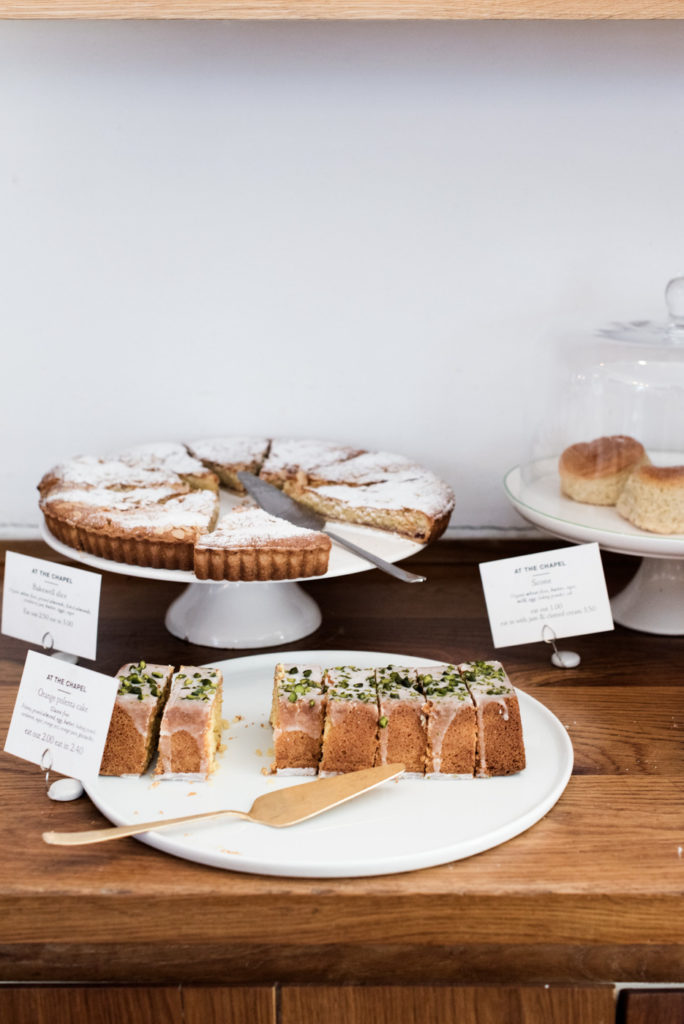
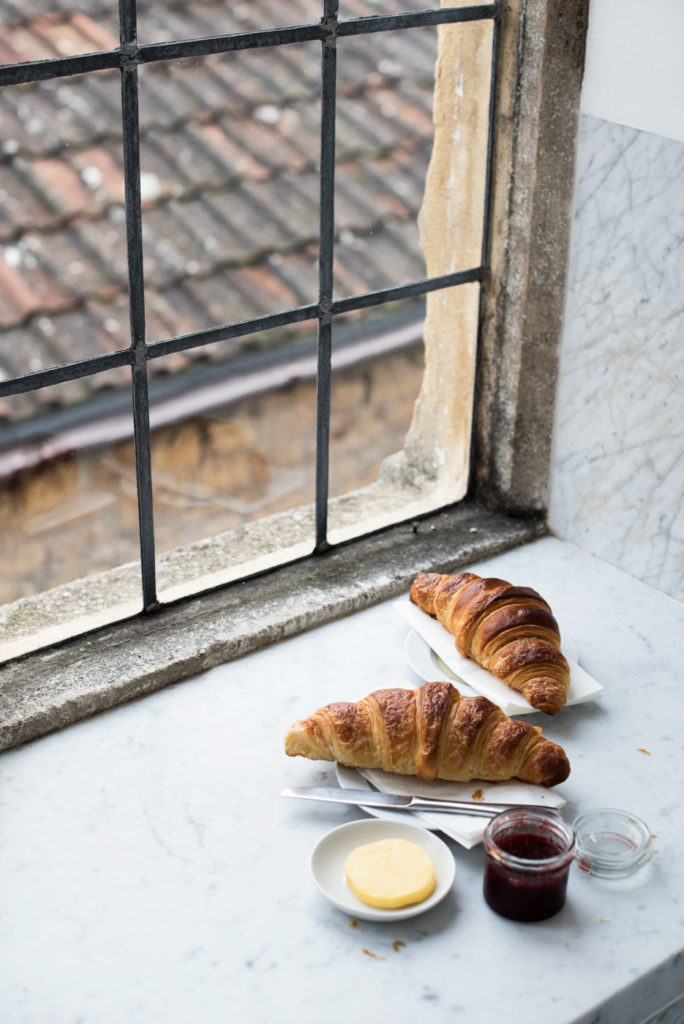
Eight years after moving into the derelict space, Butler and Sidki opened At the Chapel, recognizing an opportunity for creativity, community and business to combine. “When we first came here, there was nowhere to eat. It was impossible to have dinner past 8 p.m. on a Saturday night. I thought, ‘I can’t live here!’” Butler remembers. “We knew when we opened up that we needed to create somewhere for people to get decent bread, decent coffee and decent wine.” Of course “decent” is an understatement. The wine sold in their in-house shop and served in the restaurant all come from small producers, the white wooden shelves stocked with meticulously-selected, largely biodynamic wines, chosen by restaurateur Eric Narioo. “We needed a little help from our friends. And people did help us.”
Butler sings the praises of head chef, a “local boy” who shares her passion for Somerset produce and colorful, comforting dishes, from hearty roasts using local game to wood-fired pizzas and nods to the Mediterranean. “I always think that you should be able to sit down and have dinner with the people you work with,” she tells us. “That’s kind of my rule.” They received their Michelin Bib Gourmand in 2010, two years after they opened.
At the Chapel has become synonymous with good bread. The Chapel’s head baker has been perfecting his craft for more than 20 years. “He’s a creature of the night,” Butler tells us. “But that is just what he loves to do. Make bread. And he’s the best at it.”
After a long, luxurious dinner of pheasant, local cheeses and natural wine, we go and join Hitchmough in the bakery. He is working simultaneously on several batches of bread—rosemary focaccia (before this, I’d always thought of focaccia as brittle and dusty. This was springy, soft and brushed with olive oil), rye sourdough, a raisin and walnut white, and a five-seeded sourdough loaf. He woke up at 4 p.m. this afternoon. “Working at night is like being in a different world,” he tells us, kneading a mountain of dough on a cold slab of metal. “Everything around you is quiet. You can concentrate.” Each morning, guests staying overnight wake to a white paper bag of warm, freshly baked croissants hanging on their door handle. The smell woke us up this morning. We bundled them into the room like thieves and tore them apart, the steam leaving them and melting the butter we spread on them almost instantly. We thought of Hitchmough, who was just heading home to bed.
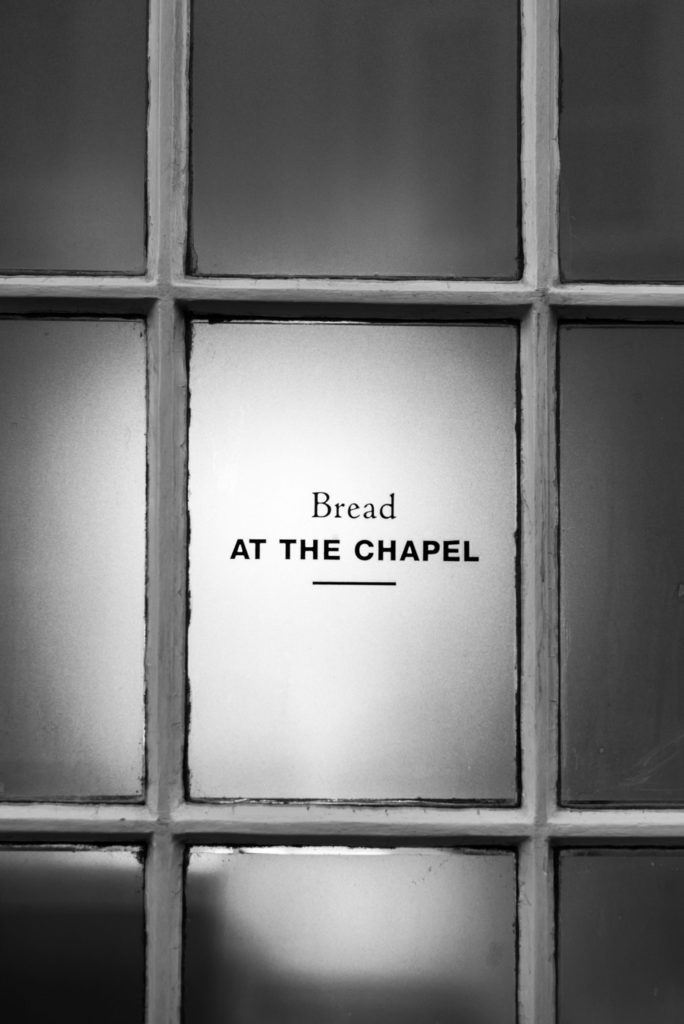

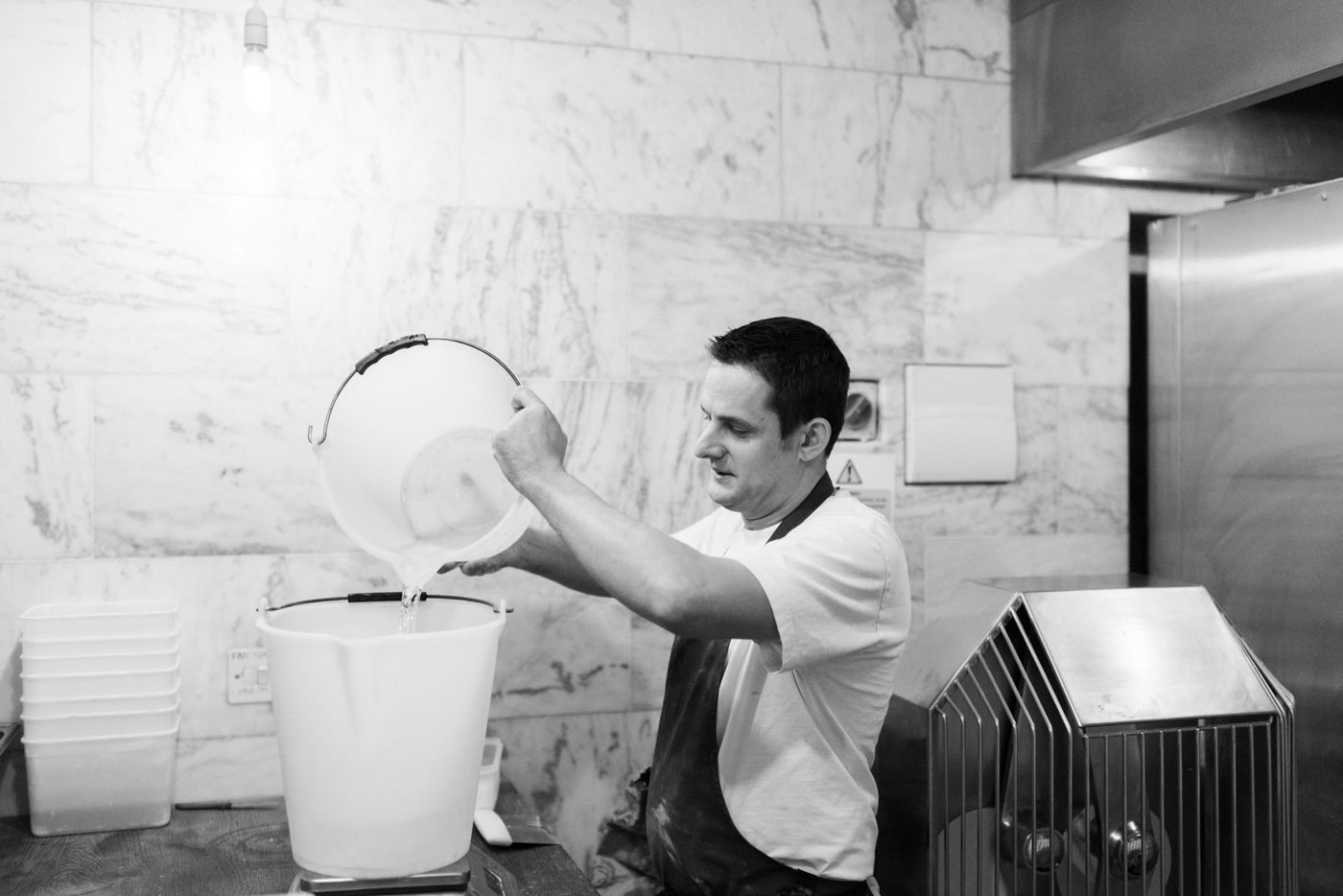
At the Chapel’s atmosphere—comforting, familial and luxurious—is hard to pin down. You have to be there, breathing in the perfume of freshly baking bread, or watching world-class musicians rub shoulders with cattle farmers, artists, locals and visitors from London. “In retrospect, I suppose we were instrumental in a big revival of this town,” Butler tells us. Chatter bounces across the main dining room as the light shines in through the church windows, the coffee machine steams, the kitchen clatters and the wine bottles pop open. Many locals visit every day, while outsiders use it as an escape—a home away from home.
The front section of the original chapel was built in the 1600s. During one of their many rubbly excavations, Butler and Sidki uncovered an old well in the basement, right beneath the dining room where a glinting chandelier now swings. The very dining room we are sitting in was once the courtyard of the chapel. After delving into the history books, they found this was the intersecting point of two ley lines.
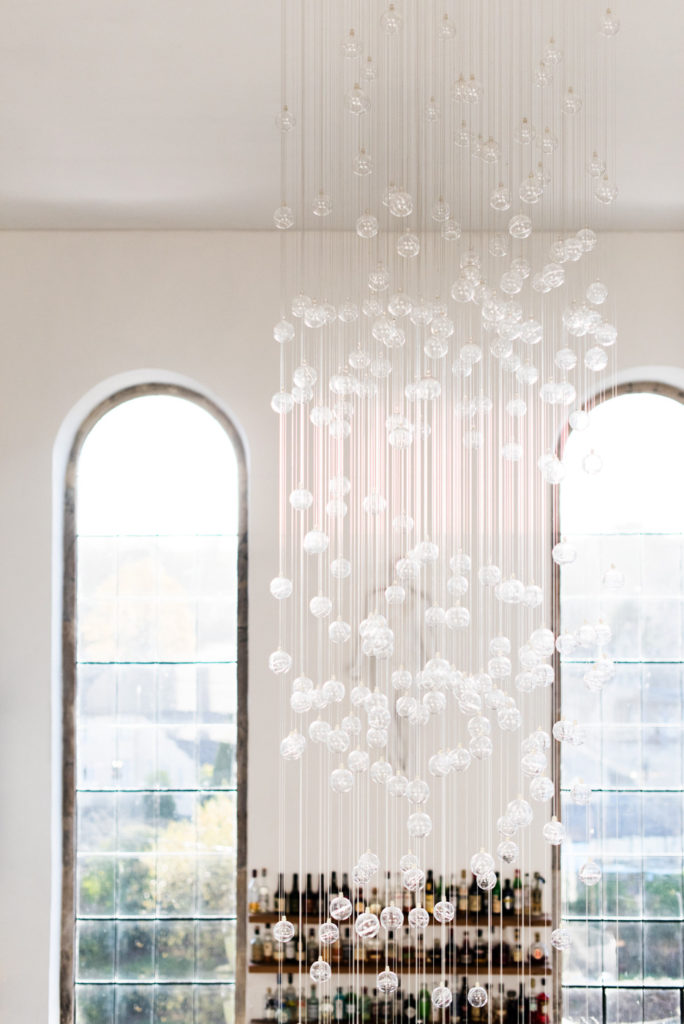
“We found out that there would have been a spring in this very point, where people would come and meet to have a drink,” Butler says, smiling. “If it became a place of any significance they would build a well. And if it became a place of any more significance, they would build a church. And so they built one,” she continues. “This is where people in this town have been coming to meet for five or six hundred years.”
Butler rises up to greet a few friends, who have come here early for drinks before dinner. During our time with her, the room has filled with guests, who have bundled themselves in from the cold through the old wooden front door and congregated at the long communal dining tables. “Learning about all of that made us think a lot about ownership. Ahmed and I don’t own this place; we’re just helping it do what it’s always done. And I hope the people that come after us will do the same. We’ll always be there in its history.”





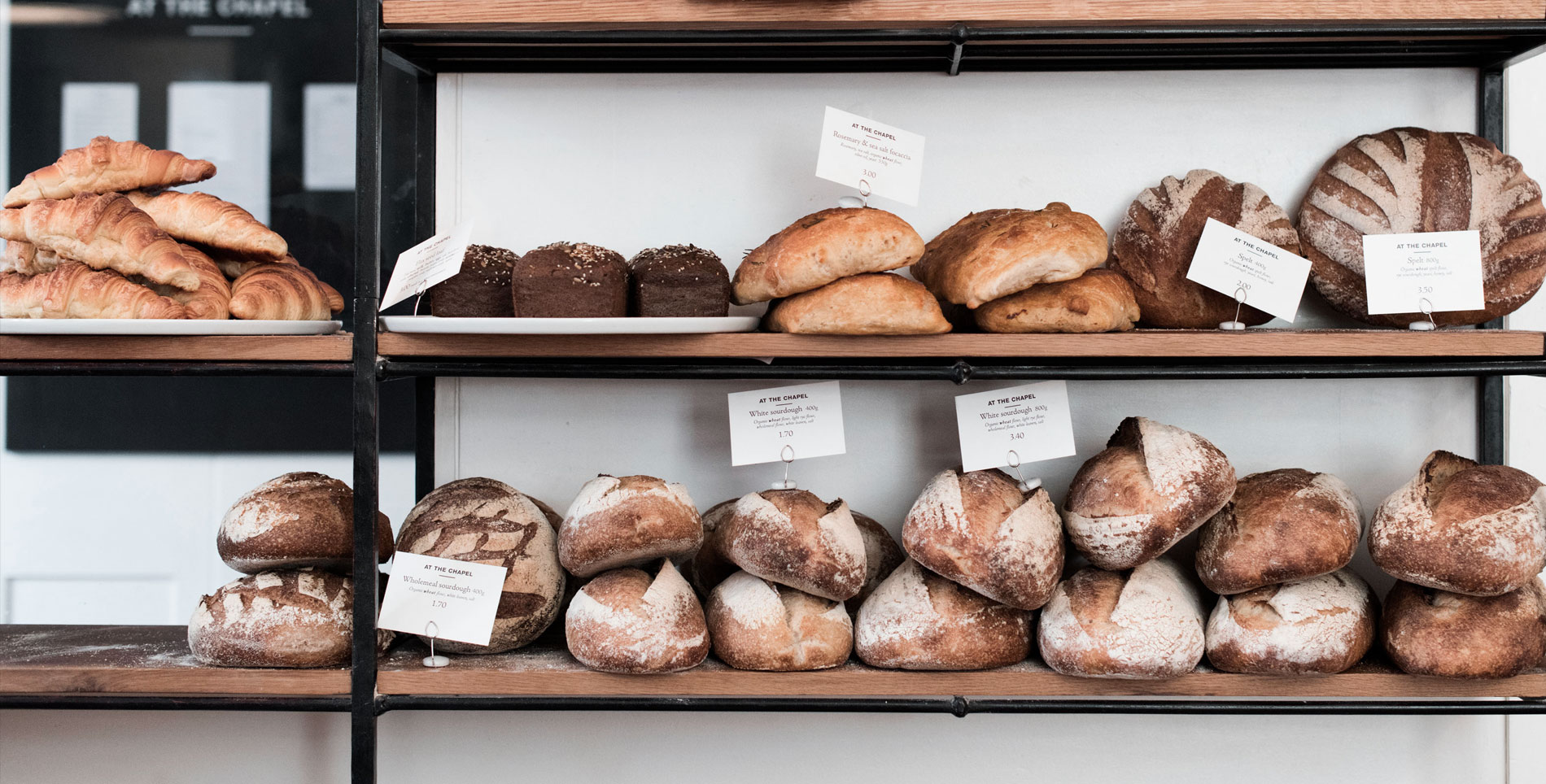

Our comments section is for members only.
Join today to gain exclusive access.